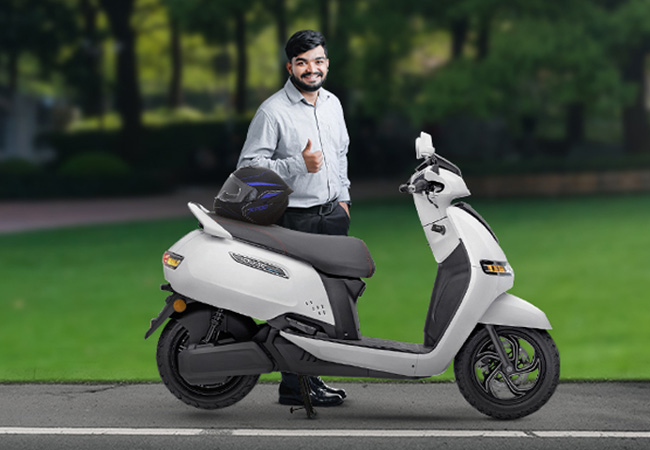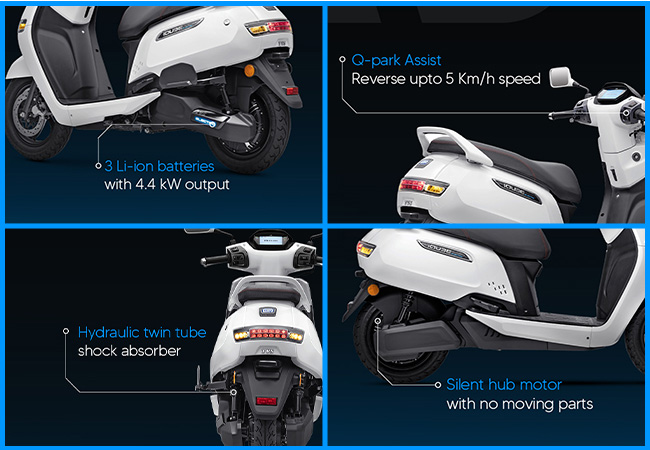When it comes to electric scooters, the range is perhaps the most crucial factor when making a purchase. As the world moves towards sustainable mobility, the electric vehicle market is seeing a surge as it offers eco-friendly transportation. Many EV buyers are on the hunt for electric scooter options with high range.
There are multiple factors deciding the range and companies do consider a range of factors before deciding which electric scooter is to be launched and made available to buyers.
How is the range decided on an electric scooter?
The most crucial element in this regard is the battery capacity and the motor’s power output that determines the maximum range of an electric scooter.
Here are the factors explained in detail to accurately estimate your scooter’s range:
Motor Efficiency
The type of motor being employed plays a crucial role in how power is delivered by the e-scooter. A motor’s power rating is given in units of Watts. The wattage specifies how much peak power the motor can consume; a higher wattage motor will be able to consume more electricity in a short span of time. A motor with a higher watt rating will indicate that it can carry more loads and accelerate quicker when the power is provided.
Also, there is a difference between continuous and peak power. Continuous power is the maximum amount of power that a motor can consume for a longer duration without any malfunction. Peak-rated power translates to the amount of peak electricity the motor can operate in a short span of time.
Lastly, there are two types of motors that are most commonly used.
Permanent Magnet Synchronous Motor (PMSM) runs on AC current and has permanent magnets embedded in the rotor which is basically a mix between an induction motor and a brushless motor. While it has a permanent magnet rotor, the construction and mechanism resemble an induction motor.
PMSM motors are used for high-performance vehicles with smooth rotation through the speed range and 100% torque available at zero speed. Furthermore, they require sophisticated manufacturing processes. Since the motors are complex, the price tags are higher.
BLDC (brushless direct current) motor, on the other hand, uses a permanent magnet that rotates due to the changing magnetic field of the surrounding stationary coils. This type of motor offers greater controllability and efficiency. They use simple mechanisms and algorithms to run and are thus cheaper to manufacture.
Peak-rated power is usually 2 to 5 times more than continuous power.
Battery Pack
The battery pack is the main power source of any electric vehicle. Earlier, nickel and lead acid batteries were common. However, Lead-acid batteries are ideal for domestic power usage where demand fluctuation is minimum. They also lack energy density and lifespan.
Only lithium-ion batteries are able to keep up with the power needed when the rider flicks the throttle open for torque. Li-ion batteries tend to have a lesser weight than lead-acid batteries. Also, Li-ion batteries have minimal maintenance owing to their higher charge cycles.
Terrain and Riding Style
Terrain plays a crucial role in determining the range of electric scooters. Flat lands tend to demand consistent power as compared to hilly terrain that demands additional torque while climbing.
Riding style is also directly linked to the range that electric scooters can offer, as consistent speed makes the battery offer more range. On the other hand, accelerating hard demands more power, which is ultimately sourced from the battery, thus reducing the range per charge.
Considering all these factors, here are our top long-range EV scooters: -
• TVS iQube ST (5.1kWH) - It is the highest-range EV scooter in India thanks to the massive 5.1 kWh battery pack. It can offer a claimed range of 150*km on a single charge with a top speed of 82 km/h.
• TVS iQube ST (3.4kWh) - It is also among the top contenders when it comes to long-range electric scooters. The 3.4 kWh battery ensures a range of 100* km on a single charge. It can charge 0-80% in 3 hours, coupled with a 950W off-board charger for minimal wait.
• TVS
iQube S (3.4kWh) – This variant has been on the market since 2020. The tried and tested powertrain offers a claimed range of 100*km, a top speed of 75 km/h, and can accelerate 0-40 km/h in just 4.2 seconds.
Another special mention here is TVS iQube 2.2kWh with a range of 75* km. The highlight here is the charging speed. With the fast charger, it can be charged from 0-80% in just 2 hours.
There are multiple options of long range electric scooters in the TVS iQube lineup. To know more:
Book Now!
Also Read:
TVS iQube – The Best High Range E-Scooter in India
TVS iQube - Leading a New Frontier for TVS Motor
Exciting News for Electric Scooter Enthusiasts: New TVS iQube Variant Launched!







